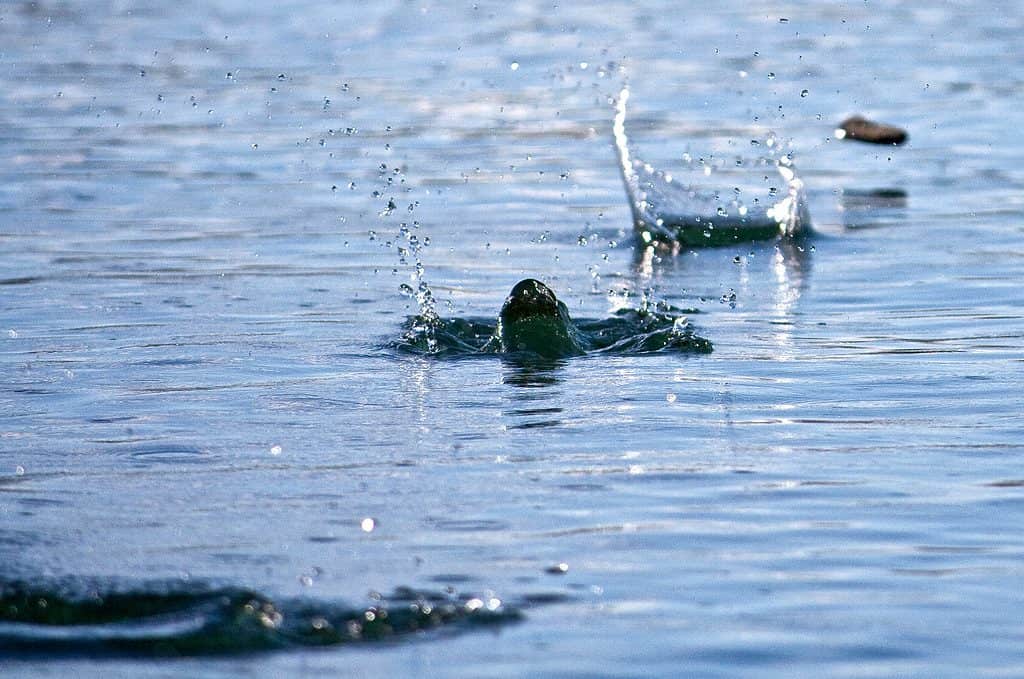
Stone skipping is a fun pastime for millions across the world and can be considered a sport in its own right, requiring skillful technique to master. Kurt “Mountain-Man” Steiner currently holds the record for the most consecutive skips of a stone on water, having managed to launch a skipping stone that touched the water 88 times at Red Bridge in the Allegheny National Forest (ANF) in Pennsylvania.
Steiner and virtually all other skipping champions use thin, flat stones for achieving the most optimal number of consecutive leaps over water. But there are different shapes and sizes that can also work — sometimes in very surprising ways, as British researchers learned in a new study that potato-shaped rocks are capable of producing incredible leaps when thrown at an angle at a body of water.
“Try some wacky stones and see what happens,” Dr. Ryan Palmer, an applied mathematician at the University of Bristol, told The Guardian. “Try and throw a stone that looks like a potato. You can get some fun things happening with heavier stones.”
The science of stone skipping
The earliest recorded efforts to provide an explanation for the physics of stone skipping can be traced to the 18th century, when Lazzaro Spallanzani, an Italian Catholic priest, wrote that throwing a rock, a flying disc, generates lift by pushing water down as it travels across the surface of a pond at an angle.
More recently, in 2002, French physicist Lydéric Bocquet found four main factors that determine whether a stone sinks or skims: mass, the angle to the horizon and surface of the water, spin rate, and horizontal velocity. Bocquet concluded that throwing stones at small angles of around 20 degrees combined with high spin rates result in an optimal toss.
Any experienced skipper knows well that rock selection is crucial. “Mountain Man” has triangle, square, and circle-shaped stones for all situations. His favorite skipping stones weigh between three and eight ounces and are about a quarter-inch thick.
However, those aren’t the only kinds of stones one could use, Dr. Palmer found. He and colleagues devised a mathematical model that looked at how the shape and mass of an object influence how it skims on the surface of a liquid. This model showed that the curvature of the underside of an object, such as a stone, is paramount to whether or not it will skim on water.
The researchers found that heavy stones that should sink immediately will actually skim if the curvature is just right. There’s more to it.
While thin stones may be great for skipping the water in dozens of leaps, bulky stones aren’t really good for that. However, heavy, curved stones will push onto the water’s surface with greater pressure and, thanks to the curvature, the stone will be pushed upwards by the body of the water. The horizontal throw essentially turns into a vertical motion.
“If you’ve got a heavier rock, you can get a super-elastic response, where you get a single mega-bounce rather than lots of little bounces,” said Palmer. “There’s this almighty leap out of the water.
“It changes the game. It’s very satisfying if you can achieve it.”
Beyond putting a new twist on skipping and making it more fun, this research could have more practical applications in certain industries. For instance, the same model could be used to help engineers solve certain problems in the aerospace industry, such as the buildup of ice on aircraft at high altitudes or the instability of landing a plane on water.
The findings appeared in the Proceedings of the Royal Society A.






